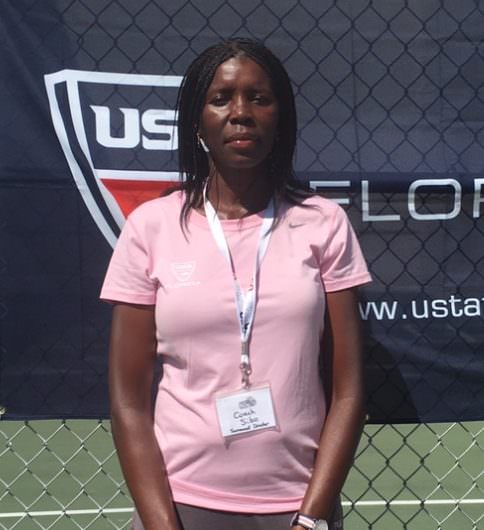February 21st, 2018
Florida Tennis Profile: Ft. Myers’ Kangwa Shapes Minds, Bodies on Court
As USTA Florida celebrates Black History Month throughout February, we’ll be profiling the adults and juniors who are performing on the courts and giving back to their local communities through their love of the game.

She came into the game through her husband, a former Davis Cup player and captain, and for the past 10 years has been teaching and organizing tennis.
In 2016 she was named the USTA Florida Tennis Volunteer of the Month, and that same year her family was honored with the USTA Florida Outstanding Tennis Family award.
How did you first get involved in tennis?
My husband is currently a USPTA pro; prior to that he played for the Zambia national tennis team, and competed for Zambia’s Davis Cup team before serving as captain. I enjoyed watching Patrick play and decided to play also.
Where do you work currently?
The Barbara Manzo Tennis Center at Three Oaks in Ft. Myers.
Who has been your biggest influence in tennis?
My family.
Who is your favorite player?
Roger Federer is someone I have always admired. He has grace and discipline on court and is a role model for all tennis players, young and old.
What is the significance of Black History Month to you?
I think it is important to reflect on the history of blacks in this country.
What do you think has contributed to the growth of tennis and the participation of the African American community in the recreational and competitive levels over the years?
I think the success and drive of current players like Americans Donald Young, the Williams sisters, Sloane Stephens, Madison Keys, Taylor Townsend, Victoria Duval and international players such as Gael Monfils and Jo-Wilfried Tsonga has impacted the growth of tennis and increased the participation of black American children. Players like Arthur Ashe, James Blake and others who came before them helped propel our sport and demonstrate how diverse it is.
Additionally, I believe that the USTA focus on cultural diversity and programs for teaching tennis at the recreational and competitive level, through support of programs in socially- and economically-disadvantaged neighborhoods, for example, has helped us develop a strong base in this community as a home for children who want to learn a sport that they could play into their elder years.
What do you like the most about tennis and how has it impacted your life?
It is difficult to perfect — it encompasses all life problems.
What message do you have for parents and children looking for a sport to play?
Tennis is a sport you can play all your life — good for the mind and body, very important socially, and something that is forever changing.


